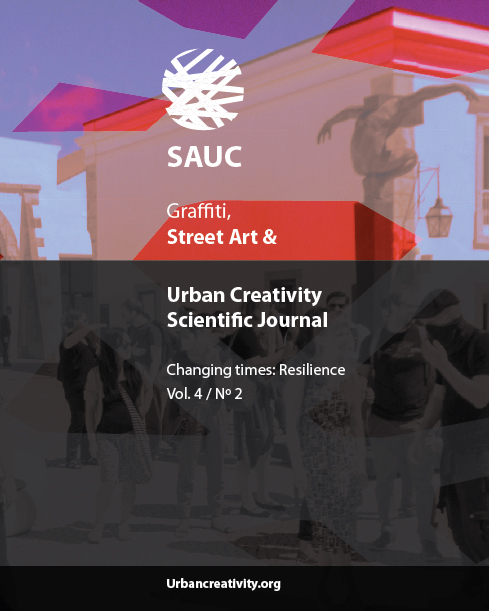The “black-and-white mural” in Polytechneio :
Meaning-making, Materiality, and Heritagization Of Contemporary Street Art in Athens
DOI:
https://doi.org/10.25765/sauc.v4i2.143Keywords:
semiotics, design, cultural studies, Athens crisis, street artAbstract
The campus of the National Metsovian Polytechnic in central Athens has been a significant cornerstone in the socio-political landscape of the city. Within the history of modern Greece, Polytechneio is regarded as a symbol of resistance against the Greek military dictatorship (junta) in 1973. In March 2015 and during times of austerity politics, the west façades of the Polytechneio were covered by a “black-and-white mural” (Tziovas 2017: 45). This paper examines how and why this black-and-white mural has been discussed often controversially from different kinds of recipients, leading to an ardent public debate within Greek society from a cross disciplinary point of view: 1) semiotics, 2) design, and 3) cultural studies. For our analysis, we use data from primary and secondary sources. Primary data sources include photographic documentation of the field. Secondary data sources include photographic material and newspaper articles circulated online, as well as, relevant academic literature.
First, we examine how this mural was integrated into the constructions and intersubjective experiences of public space from the perspective of semiotization of space. Second, we discuss the practicalities involved for the fulfilment of this mural from the perspective of design-scope. And third, we advance the discussion around the issues of cultural preservation and heritagization of street art and graffiti. Our goal in this paper is to avoid binary interpretations, and instead, to induce in an intermediary way the significance of public dialogue, which this mural achieved to trigger.
Downloads
Global Statistics ℹ️
|
180
Views
|
0
Downloads
|
|
180
Total
|
|
Downloads
Published
How to Cite
Issue
Section
License
Those authors who publish in this journal accept the following terms:
-
Authors retain copyright.
-
Authors transfer to the journal the right of first publication. The journal also owns the publishing rights.
-
All published contents are governed by an Attribution-NoDerivatives 4.0 International License.
Access the informative version and legal text of the license. By virtue of this, third parties are allowed to use what is published as long as they mention the authorship of the work and the first publication in this journal. If you transform the material, you may not distribute the modified work. -
Authors may make other independent and additional contractual arrangements for non-exclusive distribution of the version of the article published in this journal (e.g., inclusion in an institutional repository or publication in a book) as long as they clearly indicate that the work was first published in this journal.
- Authors are allowed and recommended to publish their work on the Internet (for example on institutional and personal websites), following the publication of, and referencing the journal, as this could lead to constructive exchanges and a more extensive and quick circulation of published works (see The Effect of Open Access).













